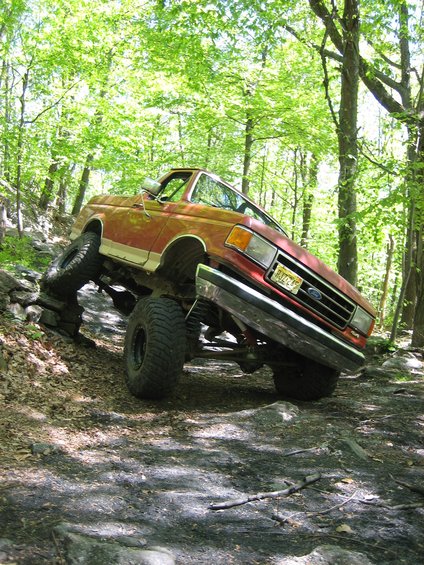jsudar
Well-Known Member
- Location
- Cedar Hills
I am putting a solid axle under my 97 F150, but I'm not sure which link setup to use. I will be using coilovers with 12-14" of travel, maybe 16's if they will fit. I definitely want to use a panhard bar since the truck will be street driven and thrashed in the desert. I still want to have decent flex just in case I need to do a little crawling.
I am considering three options (all will use a panhard for lateral location)
1. radius arms on both sides (like an RE long arm kit)
2. single link on one side and radius arm on the other (like waynehartig's ride)
3. three link-- two lower links and one upper to control axle wrap
My questions are:
1. how well do dual radius arm setups flex? do they rely on bushing distortion to get flex or could I use heim joints?
2. How important is it to control caster loss/gain? any setup with radius arms will have caster change as the suspension cycles, but a three link can be setup to keep caster fairly constant.
I would prefer to build a radius arm setup for simplicity-- easier to set up and easier to fit, but I am worried about the caster change with that much travel.
Let me know if you have any thoughts.
I am considering three options (all will use a panhard for lateral location)
1. radius arms on both sides (like an RE long arm kit)
2. single link on one side and radius arm on the other (like waynehartig's ride)
3. three link-- two lower links and one upper to control axle wrap
My questions are:
1. how well do dual radius arm setups flex? do they rely on bushing distortion to get flex or could I use heim joints?
2. How important is it to control caster loss/gain? any setup with radius arms will have caster change as the suspension cycles, but a three link can be setup to keep caster fairly constant.
I would prefer to build a radius arm setup for simplicity-- easier to set up and easier to fit, but I am worried about the caster change with that much travel.
Let me know if you have any thoughts.

